Summer 2020
Past Present
– Katie Stallard-Blanchette
Kim Il Sung created a powerful fiction to gain power. His family has used it to stay there.
The fighting started just before dawn on June 25, 1950. North Korean artillery and mortar units thundered into action, unleashing a furious barrage on South Korean positions along the border as the first waves of ground troops and Soviet-made tanks stormed south across the 38th parallel. Within three days, they had taken control of the South Korean capital, Seoul, gaining ground steadily as they continued their advance.
It was a carefully planned offensive, intended to catch the other side at its least prepared and reunify the peninsula by force. But that wasn’t what North Korea’s leader, Kim Il Sung, told his citizens in an emergency radio broadcast twenty-four hours into the conflict.
“On June 25, the army of the puppet government of the traitor Syngman Rhee [the leader of South Korea] started an all-out offensive against the areas of the northern half of the Republic all along the 38th parallel,” Kim informed his listeners. North Korean forces were “fighting fierce battles to counter the enemy’s invasion.”
Kim’s initial lie set the tone for how the regime would depict the conflict for the next seven decades. Successive North Korean leaders have exploited the history of the Korean War – or as it is known there, the Fatherland Liberation War – twisting the truth of what happened to shore up public support and depict their country as besieged and under threat. And now, as in 1950, the Kim family claims to be defending the nation from its foreign enemies.
When Kim Il Sung’s voice crackled over the radio that day, he was 38 years old. He was the leader of a country that had existed for less than two years. The invasion he sought and unleashed was his first real experience of large-scale combat. Yet thanks to the intensive propaganda campaign that had accompanied his rise to power, his audience did not know this. To them, he was a guerilla war hero, who had played a critical role in liberating the country from Japanese colonial rule in 1945.
Successive North Korean leaders have exploited the history of the Korean War – twisting the truth of what happened to shore up public support and depict their country as besieged and under threat.
The glimmer of truth in the tale was that Kim had been a guerilla fighter, who joined the anti-Japanese struggle as a young man, and commanded sizeable groups of rebels. But Kim’s battles were fought primarily in Manchuria, north-east China – and his fighting days were over long before the end of the war. In 1940, he fled across the border into the Soviet Union, where he spent the rest of the conflict at a Red Army base in the Russian Far East.
Japan’s control of the Korean peninsula ended with its defeat by the Allied powers in World War II, without the presence of Kim Il Sung among them. Yet Soviet propagandists built up a legend of Kim’s past heroism that gained ground, and the memory of foreign occupation must have been only too raw in his listeners’ minds as he called his countrymen to arms.
“Dear brothers and sisters, a great danger has befallen our country and people,” Kim declared in his radio address. “The war we are fighting… is a just one for the country’s reunification, independence, freedom, and democracy. The entire Korean people, if they do not want to become the slaves of foreign imperialists again, must rise as one in the national-salvation struggle… We must win ultimate victory at all costs.”
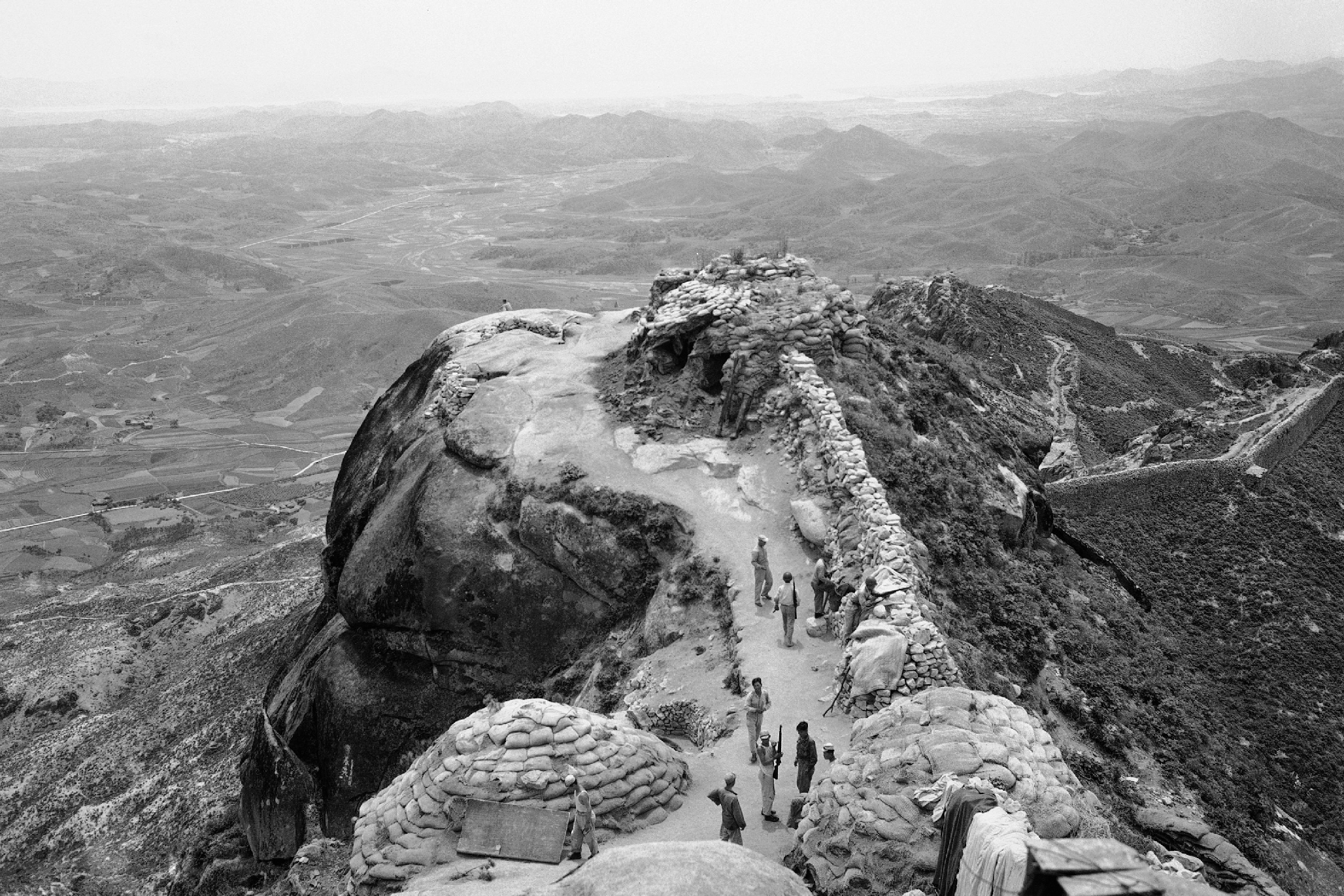
He didn’t mention that the war for reunification was one that he had started. But it was an effective rallying cry.
“Large spontaneous demonstrations appeared everywhere,” reported the Soviet embassy in Pyongyang as word of the purported invasion spread. “… [T]he population protested the provocative attack of the South Koreans and demanded that the enemies of the people be answered blow for blow.” Workers rallying outside a factory in the capital denounced the South Korean president, as well as his “American imperialist masters,” and vowed that “[t]hose who believe in the republic will rise together with all the people to fight.”
“A Country of Robbers on a Sea of Blood”
Kim Il Sung’s story of how the conflict started wasn’t true. But the devastation that followed was all too real.
The United States dropped more bombs on North Korea than it did in the entire Pacific Theater during the Second World War, including more than 32,000 tons of napalm. More cities were destroyed than in Germany or Japan.
“The inhabitants throughout the village and in the fields were caught and killed and kept the exact postures they had held when the napalm struck,” wrote New York Times correspondent George Barrett of the aftermath of one bombardment. He included an inventory of the horrors: “[A] man about to get on his bicycle, 50 boys and girls playing in an orphanage, a housewife strangely unmarked, holding in her hand a page torn from a Sears, Roebuck catalogue crayoned at Mail Order No. 3,811,294 for a $2.98 'bewitching bed jacket - coral.' There must be almost 200 dead in the tiny hamlet.''
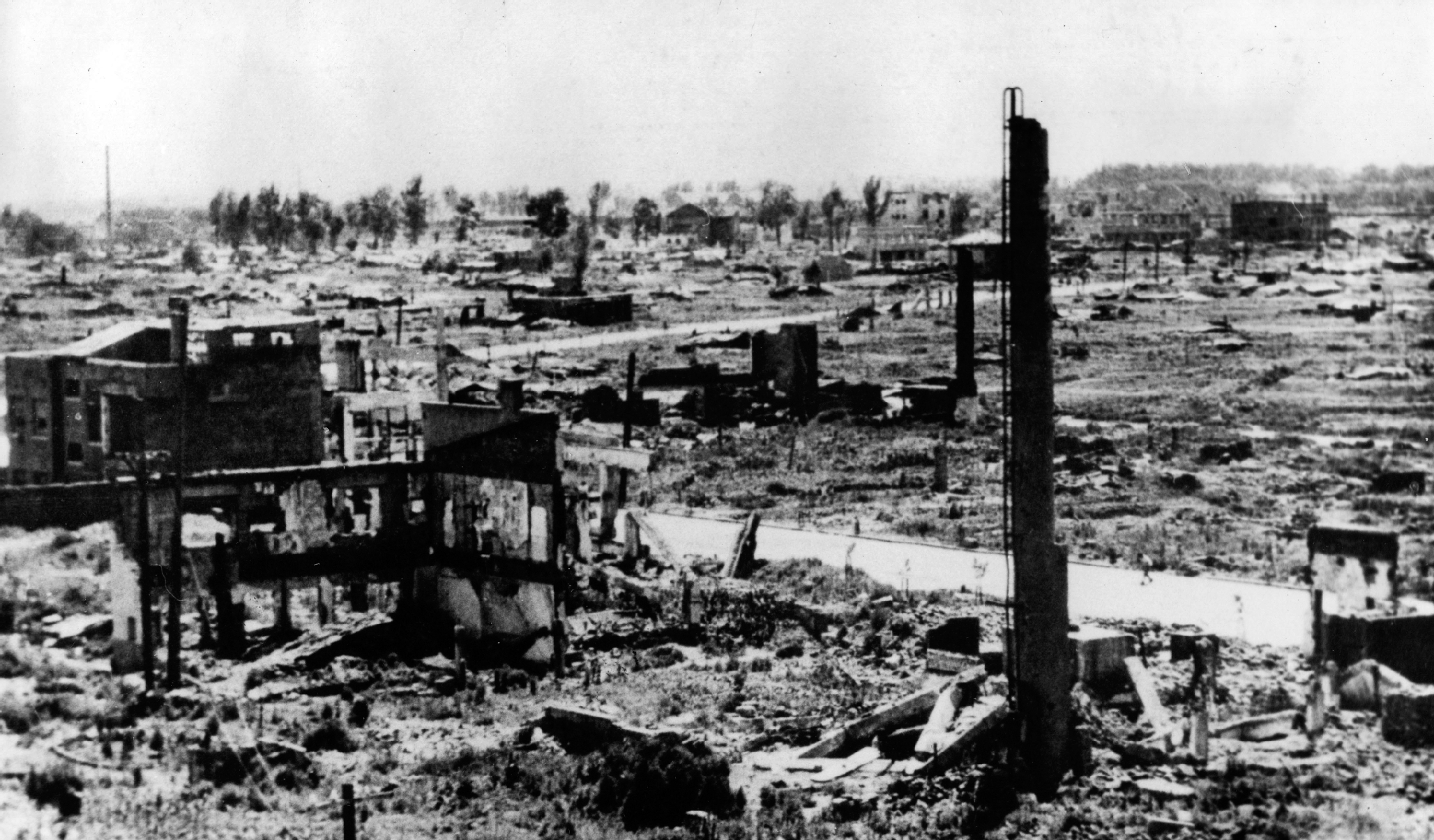
The picture in the capital was similarly dire. As a dispatch from the Polish embassy recorded in 1951, “There are very few houses left in Pyongyang…. We saw scenes of despair, for example, children who were pushing aside the rubble with their little hands in search of their mothers.” The humanitarian situation was also becoming desperate. “Half-naked people and naked, haggard children are nesting in caves in the hills,” warned the embassy, urging the Polish Foreign Ministry to send emergency shipments of clothing, medicine, and food.
The conflict hadn’t come out of nowhere. Well-reported skirmishes occurred back and forth across the 38th parallel that divided the two Koreas in the months leading up to the war. If you were living in North Korea and didn’t know the truth, it would have been logical to believe the official line: that the country was under attack from a merciless enemy and fighting, under the leadership of Kim Il Sung, to survive.
But Kim’s propagandists didn’t stop there. They added a litany of imagined atrocities to the genuine suffering wrought by the war, accusing American troops (without evidence, it should be noted) of torturing and murdering North Korean civilians using all manner of sadistic means.
“They killed people after dragging them with their noses and ears run through with wire, scooping out their eyeballs and cutting off nipples,” claimed one official history, The US Imperialists Started the Korean War, published in North Korea in 1993, “…boiling them in hot water, crucifying them and rolling tanks over them. The U.S. homicides had no scruples even of committing such an atrocity as skinning the heads of patriots and taking them away as ‘souvenirs.’”

The same book depicted American soldiers as hook-nosed, cartoonish villains, reveling in their victims’ agony – and possessing a lust for violence as an innate character trait. The modern U.S. army, the regime’s historians explained, had inherited the “brutal traditions of their Yankee ancestors,” who “set up a country of robbers on a sea of blood shed by the American natives, established a ‘special fund’ for the skins of the heads of Indians, encouraged their brutal murder with “prizes” and thus exterminated their race.”
Closer to the war’s end, the readers of a 1961 North Korean publication, History of the Just Fatherland Liberation War, were presented with a similar picture of innate American perfidy: “The war clearly revealed the savagery of the U.S. imperialists, beasts in human skins and the man-eaters of the 20th century.”
All this gratuitous violence has served a purpose, both then and now. North Korean citizens are repeatedly reminded about the barbaric nature of the enemy they are supposed to have faced during the war. This foe possesses an enduring character of violence, from which each new Supreme Leader still claims to protect them.
The Victory of “Planned Strategic Retreat”
The course of the war itself has also been rewritten to suit the needs of the regime. Kim’s initial offensive was stalled short of its goal by the arrival of the U.S.-led United Nations force under the command of General MacArthur. The UN forces landed at Inchon, near Seoul, cutting North Korean supply lines and forcing their troops into a rapid retreat north.
Certain defeat for Kim’s forces was prevented only by China’s intervention in November 1950. Under the guise of a “People’s Volunteer” army, Chinese military forces turned the tide of the conflict again, driving UN forces back south, where the front line eventually stabilized around the 38th Parallel. Only after two years of attritional trench warfare was an armistice finally signed on July 27, 1953. And without a formal peace treaty, the conflict has never officially ended.
As with the start of the war, the North Korean version of its trajectory bears little resemblance to the reality. Kim’s chaotic withdrawal north after Inchon is reimagined in the History of the Just Fatherland Liberation War of the Korean People as a “planned, strategic retreat,” and the war itself is said to have culminated in a “great historical victory” for Kim’s forces over the “U.S. imperialists and their hirelings.” Photographs of weary-looking American negotiators are presented as evidence of how the mighty U.S. military had been forced to its knees in what was described as “the most shameful crushing defeat in their history of war.”
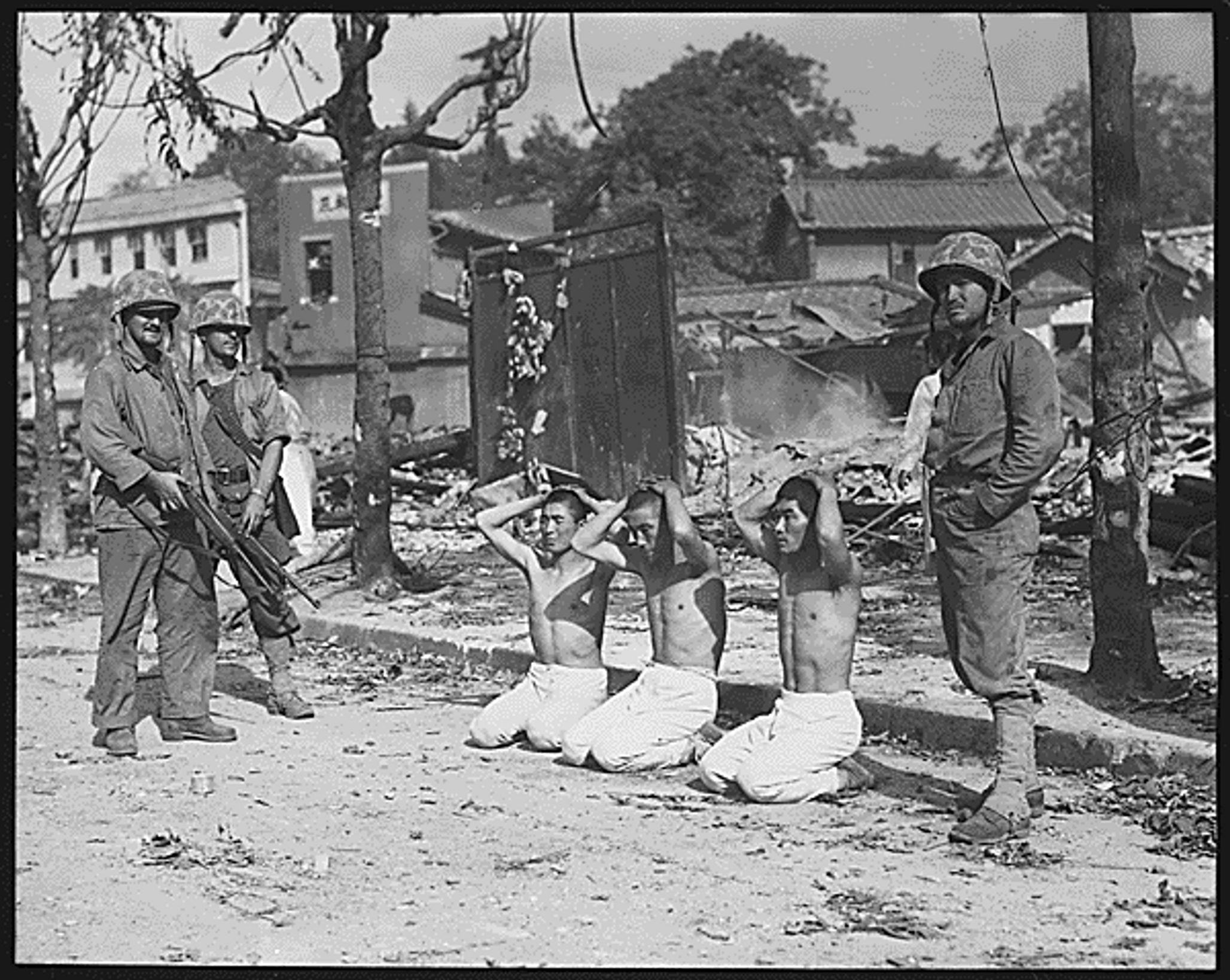
Naturally, credit for the “victory” was attributed to the strategic acumen of Kim Il Sung. The US Imperialists Started the Korean War puts the case simply: “The U.S. imperialists made a grave miscalculation. They failed to estimate the invincible strength of the heroic Korean people and the Korean People’s Army under the wise leadership of the great revolutionary leader Comrade Kim Il Sung, ever-victorious, iron-willed brilliant commander and gifted military strategist.”
The myth of Kim’s earlier triumph in the anti-Japanese guerilla war was combined with a second fictional victory in 1953 to provide North Koreans with unimpeachable proof of Kim Il Sung’s extraordinary abilities. The 1993 publication, Outstanding Leadership and Brilliant Victory, explained it this way: “On the basis of the rich experience and diverse tactics he had accumulated and created in the days of the arduous anti-Japanese armed struggle, he commanded operations and battles in each period and at each stage of the war.”
Readers are led naturally to the regime’s preferred conclusion: “Thanks to the outstanding and seasoned leadership of President Kim Il Sung, our revolutionary armed forces won a great victory in revolutionary wars against two imperialisms – Japan and the United States – in a single generation and demonstrated the heroic mettle of the Korean people to the whole world.”
Photographs of weary-looking American negotiators are presented as evidence of how the mighty U.S. military had been forced to its knees in what was described as “the most shameful crushing defeat in their history of war.”
This victorious message has been drilled into North Korean citizens ever since, starting from their earliest days at school. During a tour of a Pyongyang kindergarten in 1972, a visiting delegation observed the children being taught about Kim’s martial prowess and learning addition by counting tanks.
“The teacher holds up pictures, each showing a tank, and groups them in various combinations,” the report explained. “The children, individually and collectively, add up the number of tanks and shout out the answers.” In another class, they found that “children with crayons are drawing pictures of a tank firing and running over two enemies… There is no doubt in this country about who the enemy is.”
The “Revenge-Pledging Place”
The Kim family’s focus on the wartime past has not dissipated over time. While the outside world has understandably been focused on Kim Jong Un’s pursuit of nuclear weapons and intercontinental ballistic missiles since he came to power in December 2011, the third-generation leader has doubled down on family myths and begun to deploy what historian Adam Cathcart calls a “new urgency” in commemorating the Korean War.
On Kim’s orders, the Victorious Fatherland Liberation War Museum in Pyongyang was rebuilt and vastly expanded in 2013, along with the Museum of American War Atrocities in Sinchon in the country’s south-west. That Kim has chosen to invest in these museums at a time when almost 11 million of his countrymen – more than 40 percent of the population – are thought to not have enough to eat, demonstrates the importance the regime places on perpetuating this history.
Recalling her own experience of visiting the Sinchon museum as the Associated Press bureau chief in Pyongyang, Jean Lee (now the Director of the Wilson Center’s Hyundai Motor-Korea Foundation Center for Korean History and Public Policy) described the site as a “veritable house of horrors, with room after room graphically bringing to life the gruesome atrocities attributed to the Americans.” Lee recounts an exhibit in which “a life-sized American soldier yanks the hair of a young Korean woman tied to a tree as another American sinks a knife into her heart. In another room, suffused in red light as though drenched with blood, American soldiers drive nails into a Korean woman’s head. Rabid glee distorts their faces.”
Visitors, often including large groups of schoolchildren, are directed to a designated “revenge-pledging place” outside the museum where they are expected to line up and promise merciless vengeance against the American invaders. Touring the new exhibition in 2014, North Korean media reported that Kim expressed his approval and duly denounced “the US imperialist aggressors” depicted within as “cannibals seeking pleasure in slaughter.”
A Model Grandson
The North Korean regime’s story of the war is hard-wired into daily life. “Victory Day” is celebrated every year on July 27, on the anniversary of the armistice. Kim Jong Un’s top officials are ferried around the capital in a fleet of gleaming black Mercedes with the prefix ‘727’ on their license plates to commemorate the date. In their book, North Korea Confidential: Private Markets, Fashion Trends, Prison Camps, Dissenters and Defectors, Daniel Tudor and James Pearson observe that one of the chain-smoking leader’s favorite brands of cigarette is said to be the luxury 7.27 line.
The regime’s portrayal of North Korea as a country besieged by hostile foreign threats also remains potent, with external enemies blamed for every conceivable problem. It is not Kim Jong Un’s actions and his pursuit of nuclear weapons that has brought sanctions and hardship, but the same imperialist aggressors who have been pursuing them since the war.
Leading his first Korean Workers’ Party Congress in 2016, for instance, Kim explicitly blamed North Korea’s ongoing economic difficulties and recent “unprecedentedly hard times” on the “allied imperialist forces” supposedly targeting their nation, with North Korea, as the last true bastion of socialism, “compelled to fight against them single-handed.” As Kim explained it, “The imperialists strained the situation constantly for decades to keep our people from living at peace even for a moment and blocked all the pathways to economic development and existence through all manner of blockade, pressure and sanctions.”
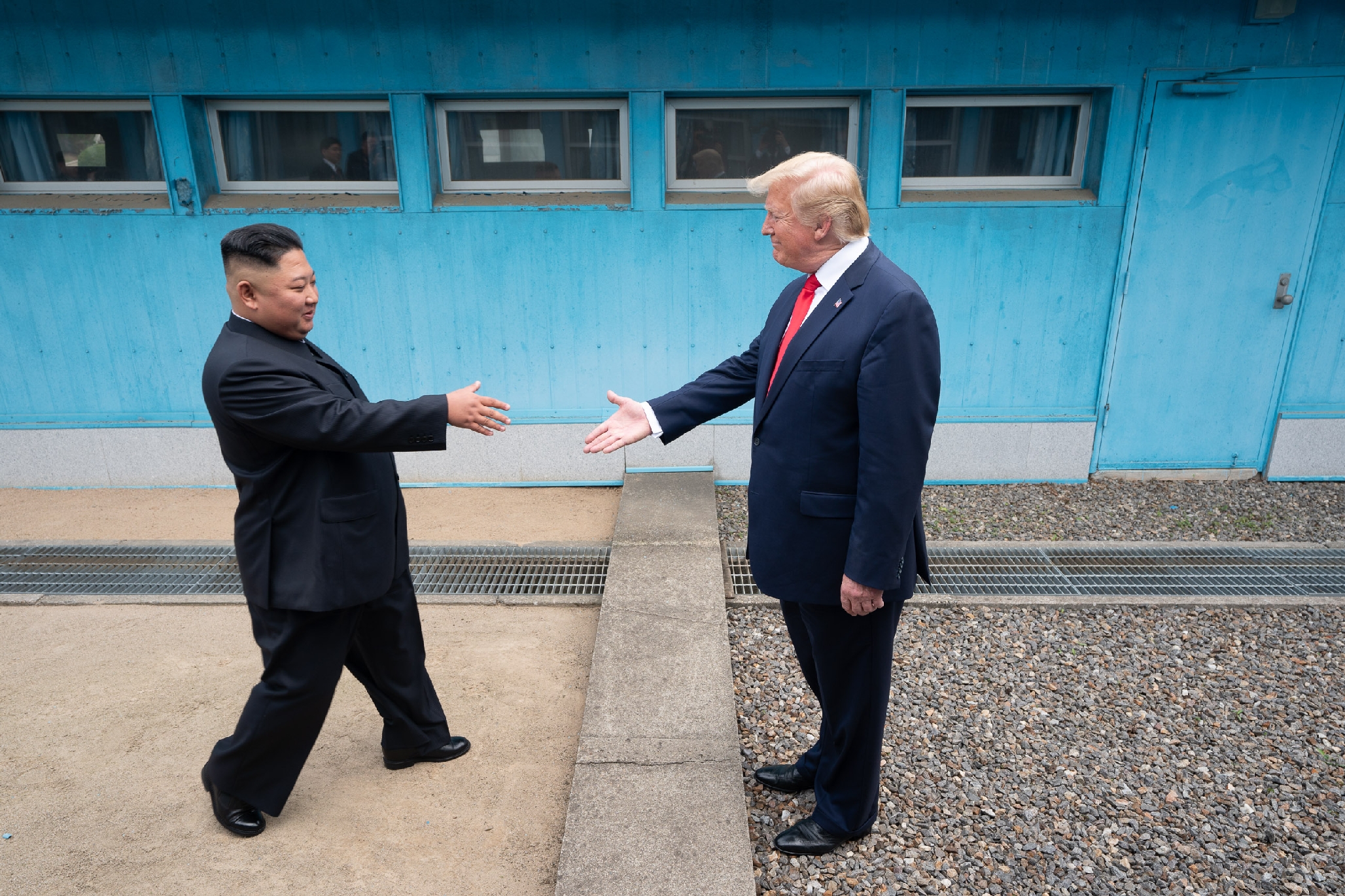
These external “enemies” crop up in comparably trivial matters too. When a new construction project was completed in October 2019, Kim took the opportunity to rail against “U.S.-led anti-DPRK hostile forces,” declaring that, “whenever the enemies try to strangle us with the chain of pressure,” North Korea’s construction efforts would deliver a defiant response. And two months later, the party newspaper reported the opening of a new hot springs resort as a victory over “the enemies who adamantly attempt to halt our advance.”
Such martial language might seem incongruous against the backdrop of the images we increasingly see from Pyongyang, where the elite are pictured wielding smartphones and enjoying the capital’s new water park and dolphinarium. But according to Kim Jong Un’s logic, the two are inextricably linked.
The regime’s portrayal of North Korea as a country besieged by hostile foreign threats also remains potent, with external enemies blamed for every conceivable problem.
As former CIA analyst Jung H. Pak explains in her recent book, Becoming Kim Jong Un: A Former CIA Officer’s Insights Into North Korea’s Enigmatic Young Dictator, by choosing to build both war memorials and luxurious new facilities, Kim is demonstrating his commitment to improving his people’s quality of life and protecting their security, with the former dependent on the latter. “They have this prosperity because of the nuclear weapons program that keeps them safe from the hostile outside world,” she observes, “and provides them with status.”
Kim has also gone to great lengths to link himself personally with his grandfather’s heroic legacy, modeling his public image on the founding president. He has also staged high-profile visits to Mount Paektu, where Kim Il Sung is said to have waged his guerilla campaign against the Japanese.
With cameras in tow, Kim toured mythical battle sites around the mountain on horseback in December 2019, where he reflected on the lessons of the past. “Riding a steed across the vast area of Mount Paektu,” reported the state news agency, “… he recollected the bloody history of the guerillas who recorded dignity on the first page of the history of the Korean revolution by shedding their blood in the vast plain...” He also called on the next generation to “instill the indefatigable revolutionary spirit of Mount Paektu” and defy the “unprecedented blockade and pressure imposed by the imperialists.”
By exploiting this distorted version of his country’s wartime past, Kim Jong Un is following in the footsteps of his father, and grandfather, before him. All three men have attempted to harness this revisionist history to secure present-day legitimacy, and portray themselves as the latest great defenders of the nation.
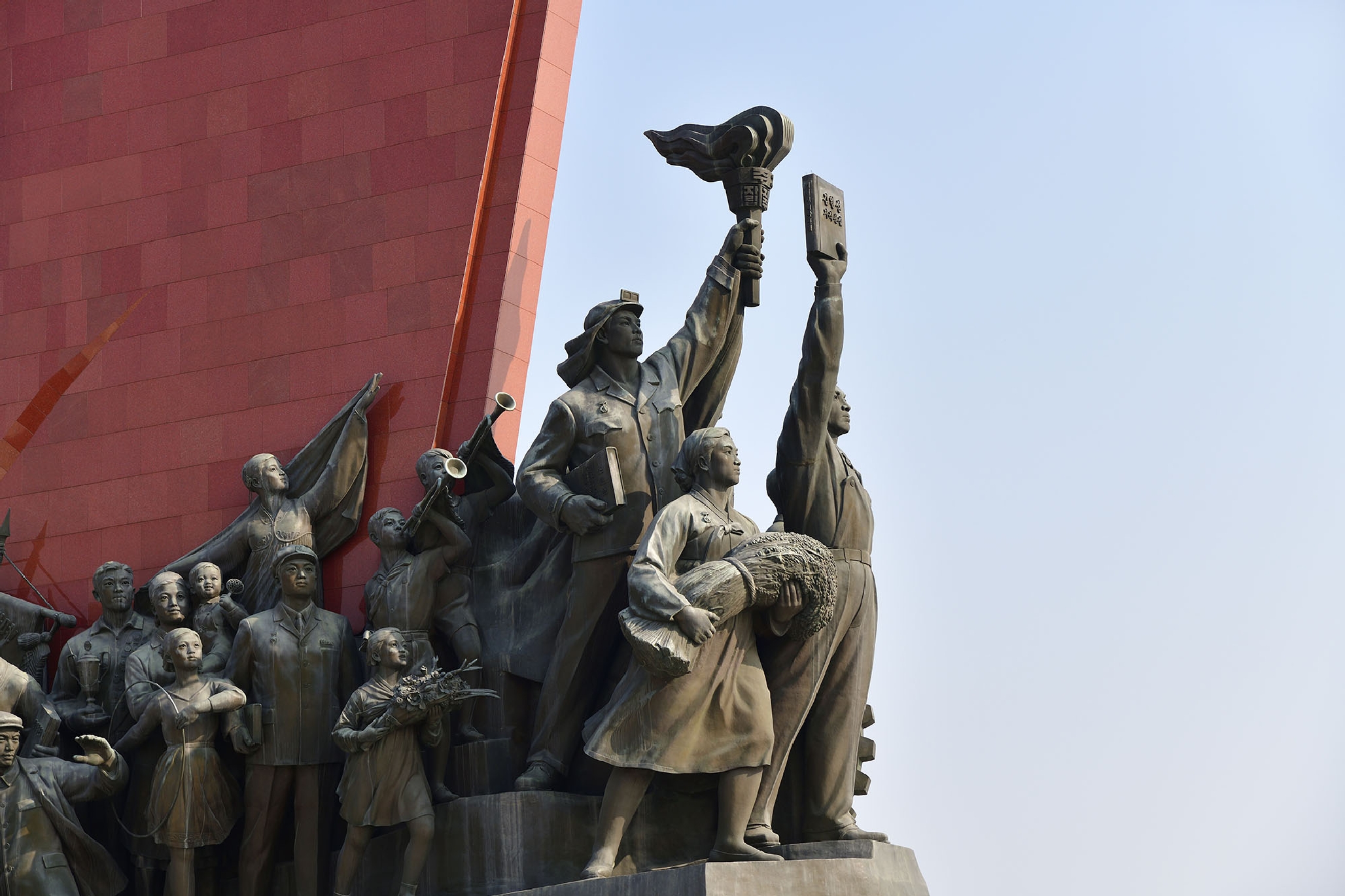
Long after it has faded from public prominence in the West, the Korean War still occupies a central role in North Korea. Its memory – or at least a twisted semblance of what really happened – is continually stoked there by a regime that seeks to remind its people of the last time they were supposedly attacked, and the consequent need to unite behind the leader and the “treasured sword” of his nuclear arsenal.
This makes for a compelling story. But it is a tale based on lies, and comes with its own limitations. The North Korean people’s discovery of the truth – that the Kim family has been impoverishing, not protecting them, and that it was the current leader’s grandfather who started the Korean War – could threaten his rule.
So, as Kim Jong Un weighs his options for the future over what may be many decades in power, he must find a way to develop his economy and keep his promises to his people, while preserving the fiction of this past.
Katie Stallard-Blanchette is a Wilson Center fellow. She was previously based in Russia and China as a foreign correspondent for Sky News.
(Cover photograph: Statues of late North Korean leaders, Kim Il Sung, left and Kim Jong Il, are unveiled in Pyongyang on April 13, 2012. Ng Han Guan/AP/Shutterstock)
